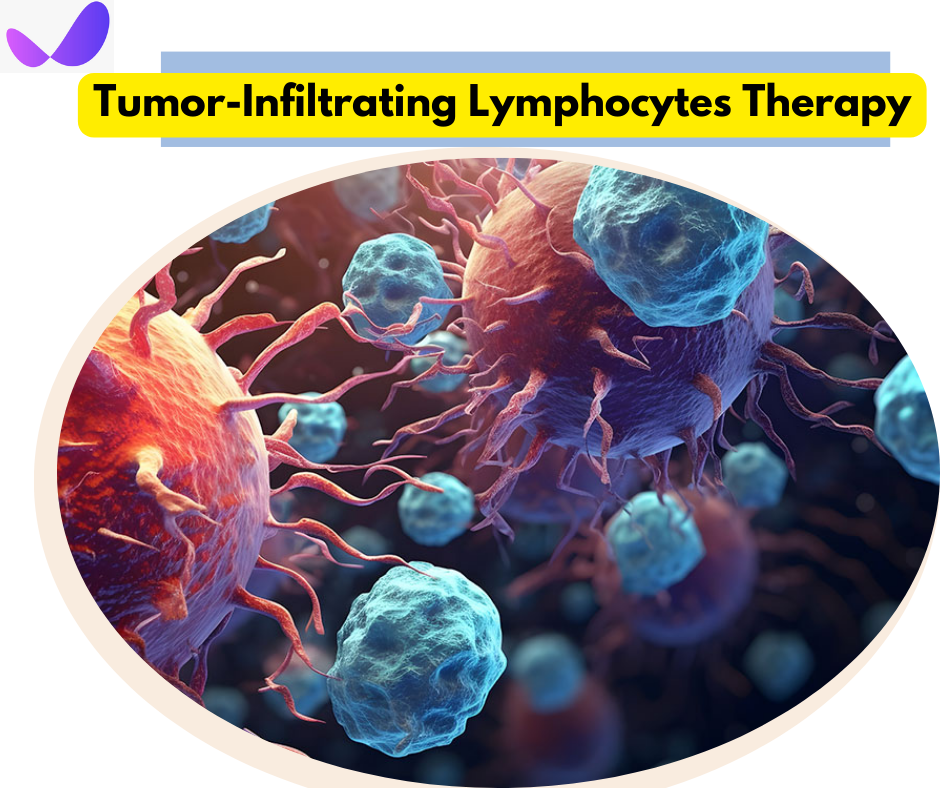In modern medicine, cancer continues to be one of the biggest obstacles. Because cancer cells are sophisticated and adaptive, standard therapies are frequently ineffective over the long term, even with major breakthroughs in treatment. However,
Overview
Tumor-Infiltrating Lymphocytes (TIL) therapy fundamentally changes the way cancer is treated. Utilizing the body's immune system to locate and eradicate tumors, TIL therapy differs from conventional techniques like chemotherapy and radiation therapy, which specifically target cancer cells.
What Are Tumor-Infiltrating Lymphocytes (TILs)
Lymphocytes are a type of white blood cell that plays a crucial role in the immune response. Lymphocytes are made up of T cells and B cells, which constantly regulate the body to identify cells that shouldn’t be present, including cancer. As cancers grow, lymphocytes recognize these cells as abnormal and penetrate the tumor. These are the tumor-infiltrating lymphocytes or TILs.
Evolution of TIL Therapy
Decades of study and testing have gone into turning TIL therapy from a theoretical idea into a clinically effective treatment option. Steven Rosenberg, M.D., and his associates in the NCI Surgery Branch made the first recorded observations of TIL therapy. The first TIL therapy clinical trials were undertaken by Dr. Rosenberg in the late 1980s, and the results showed that the treatment might reduce tumor size in patients with highly advanced melanoma. Over the years, the NCI researchers further refined the process for manufacturing and delivering TIL therapy. In 2011, NCI entered into a cooperative research agreement with Iovance to further develop TIL therapy, including conducting larger clinical trials and developing a manufacturing infrastructure, paving the way for FDA approval.
Mechanism of Action
TIL therapy's primary idea is that it uses the body's innate immune response to specifically target and destroy cancer cells. Using a minimally invasive technique, TILs are first extracted from the patient's tumor tissue. After being isolated, these TILs are cultivated and multiplied in a lab environment to increase their quantity. Enhancing the efficacy of the TILs and guaranteeing an efficient immune response against the malignancy depends on this amplification stage.
How TIL Therapy Targets Cancer Cells
Once the TILs have been expanded to sufficient numbers, they are reintroduced into the patient's body, usually through intravenous infusion. When TILs come into contact with cancer cells in the tumor microenvironment, they react by identifying them as foreign invaders and launching a concerted assault. This process is known as cell-mediated immunity. It involves the direct killing of cancer cells by TILs through various mechanisms, including the release of cytotoxic molecules and the activation of other immune cells.
TILs' Role in Fighting Cancer
One of the key advantages of TIL therapy lies in its ability to unleash a potent and targeted immune response against cancer. While normal cells are spared, TIL therapy selectively targets cancer cells, in contrast to traditional treatments that frequently cause collateral harm to good organs. By using a tailored strategy, the treatment is more effective and there is less chance of the unfavorable side effects that are often linked to radiation and chemotherapy.
Efficacy and Clinical Studies
The effectiveness of TIL therapy has been shown in numerous clinical trials for a variety of cancer types. Remarkable response rates have been noted in melanoma, one of the most researched malignancies in the context of TIL therapy, with some patients attaining total and long-lasting remissions. The adaptability of TIL therapy as a possible treatment option is highlighted by the encouraging outcomes that have been observed in different cancers, including colorectal, lung, and ovarian cancers.
Key Clinical Studies and Results
In recent years patients with melanoma, TIL treatment combined with high-dose interleukin-2 (IL-2) has shown antitumor effectiveness, with an average reported objective response rate (ORR) of 43%. About 20% to 30% of melanoma patients who received extensive pretreatment showed persistent responses. In 66 patients with metastatic melanoma who suffered disease progression following therapy with an anti-PD-1 drug and, in the case of BRAF V600E-mutant cancer, a BRAF or MEK inhibitor, a phase 2 study assessed the safety and effectiveness of lifileucel. Every patient who was included had received at least one previous treatment, such as a BRAF/MEK (23%) or CTLA-4 (80%) inhibitor or PD-1 (100%). A group of patients participated in the trial who were given a single infusion of lifileucel along with a week of nonmyeloablative lymphodepletion, and then up to six doses of IL-2.8. Three full responses and twenty-one partial responses (PRs) made up the 36.4% ORR per investigator assessment and RECIST v1.1 at a median follow-up of 28 months. The median reaction time (DOR) was not attained. No new lifileucel-related safety signals were found throughout this extended follow-up. The profile of adverse events (AEs) matched the underlying illness, lymphodepletion, and IL-2 administration.
Advantages Over Traditional Cancer Treatments
TIL therapy has several benefits over traditional cancer treatments including chemotherapy and radiation therapy. Using the body's immune system to target cancer cells is one of the main advantages; this allows for a more individualized and focused approach to treatment. Furthermore, it has been observed that TIL therapy can result in long-lasting remission and better survival rates in certain individuals.
TIL Therapy vs. Chemotherapy: A Comparative Analysis
Although chemotherapy is still the cornerstone of cancer treatment, its extensive usage is frequently restricted by severe side effects and high toxicity. On the other hand, TIL therapy provides a more focused and specific method of treating cancer, reducing the possibility of systemic toxicity and optimizing the protective effects of the immune system. This relative benefit emphasizes TIL therapy's potential as a more secure and bearable substitute for conventional chemotherapy treatments.
Reducing Side Effects
One of the most significant challenges in cancer treatment is the management of treatment-related side effects and toxicity. Traditional therapies such as chemotherapy and radiation therapy often cause significant damage to healthy tissues, leading to a range of adverse effects such as nausea, fatigue, and hair loss. In contrast, TIL therapy specifically targets cancer cells while sparing normal tissues, resulting in fewer side effects and a better quality of life for patients.
Challenges and Limitations
TIL treatment has limitations and presents certain difficulties despite its great potential. The immunological response is one of the main challenges because of its complexity and variability, which might affect how well a treatment works. Further impediments to TIL therapy's wider adoption are its high cost and logistical challenges. Additionally, not all patients will benefit from TIL therapy, thus finding appropriate candidates is still difficult.
Current Challenges in TIL Therapy
Research and innovation are being conducted to overcome the difficulties associated with TIL treatment. Researchers are looking for new tactics to increase the effectiveness of TIL therapy, like combination methods that include targeted medicines or other immunotherapeutic drugs. Furthermore, improvements in genetic engineering and cell manufacturing methods could expedite production and increase the scalability of TIL therapy
Patient Selection Criteria
The creation of strong patient selection criteria to determine who is most likely to benefit from TIL therapy is another area of focus. Tumor histology, mutational burden, and immunological profile are a few examples of factors that can affect the chance of a successful treatment outcome.
Conclusion
In conclusion, a promising new avenue in the fight against cancer is Tumor-Infiltrating Lymphocytes (TIL) therapy. TIL therapy offers a more individualized, focused, and maybe less hazardous approach to cancer treatment by utilizing the immune system's capacity to attack and kill cancer cells. Looking ahead, TIL therapy has the potential to completely change the way cancer is treated and give people all across the world new hope.






